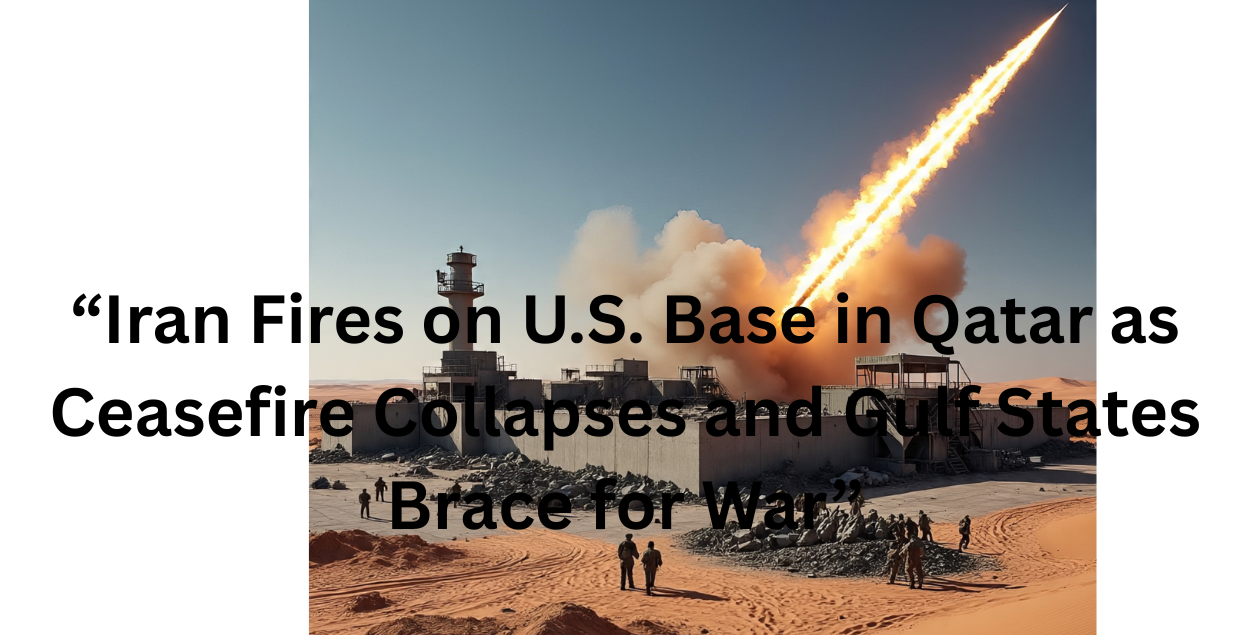FnF News
🇺🇸 FNF News | U.S. Military & Middle East Crisis
Published: June 25, 2025
Reported by: Khadija Khan, Global Conflict Bureau Chief
Ceasefire Shattered: Iran’s Missile Barrage Tests U.S. Resolve as Qatar Defends Al‑Udeid
DOHA, QATAR — Any illusion of calm was shattered overnight as Iran launched a calculated missile assault on the U.S. Al‑Udeid Air Base, targeting CENTCOM’s command post in Qatar. The move, Iran’s most direct confrontation with the United States in years, follows days of fragile ceasefire rhetoric and back-channel diplomacy that now appear to have completely collapsed.
The strike, dubbed Operation Glad Tidings of Victory, involved up to 19 ballistic missiles, according to Pentagon officials, and was a direct response to Operation Midnight Hammer—the U.S. air campaign that devastated Iran’s uranium enrichment bunkers earlier this week.
Qatar Holds the Line
With minutes of advanced warning, Qatar activated its layered missile defense grid—comprising:
- U.S. Patriot missile batteries
- NASAMS (Norwegian systems)
- British Rapier and Roland launchers
- THAAD systems (partially online)
All incoming missiles were intercepted successfully, and no casualties were reported. However, Qatari officials have summoned Iran’s ambassador and issued a rare rebuke, calling the strike “an unacceptable violation of our airspace and regional peace.”
Ceasefire Crumbles in Real Time
President Trump had brokered what he called a “two-day strategic pause” between Iran and Israel, but that truce disintegrated within hours. Iranian missiles struck near Haifa. Israeli jets returned fire over southern Syria. Both sides claim to remain committed to “measured responses,” but the rules of engagement are clearly collapsing.
U.S. intelligence now believes Iran only honored the ceasefire long enough to reposition its missile infrastructure and test American response times. Military analysts say the strike on Al‑Udeid was meant to showcase Iran’s reach while avoiding immediate U.S. escalation.
Gulf Nations Respond
Following the attack:
- Qatar, UAE, and Bahrain closed their airspace.
- Commercial flights were rerouted as Gulf airspace resembled wartime conditions.
- Saudi Arabia has increased radar coverage and activated its ballistic early-warning systems.
Meanwhile, U.S. Central Command has moved the USS Gerald R. Ford carrier group into a pre-war stance, redirecting its path toward the Strait of Hormuz.
The Broader Picture: Diplomacy Fading
Backroom diplomacy led by Qatar and Oman is under strain. The Vienna nuclear talks have been suspended indefinitely. European envoys in Tehran are being evacuated. Russia and China have called for de-escalation, but both are using the moment to expand influence over oil security in the region.
In Washington, Democratic lawmakers are calling for congressional approval before further U.S. military actions. The Trump administration insists all moves remain defensive and legal under international norms.
Proxy Forces Mobilize
- Hezbollah in Lebanon has reportedly moved artillery into forward positions.
- Houthi rebels in Yemen claim to have readied drone assets for operations in the Red Sea.
- Iraqi Shia militias backed by Tehran have begun staging across border zones, targeting U.S. outposts with increasing confidence.

